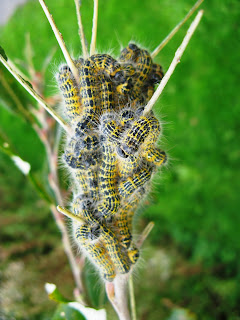This blog may help people explore some of the 'hidden' issues involved in certain media treatments of environmental and scientific issues. Using personal digital images, it's also intended to emphasise seasonal (and other) changes in natural history of the Swansea (South Wales) area. The material should help participants in field-based modules and people generally interested in the natural world. The views are wholly those of the author.
Saturday, 18 September 2010
Seeing the Changes 332
In Loughor, the conkers of the Horse chestnut (Aesculus hippocastanum) were ready for collection. There were also lots of Fairy-ring champignon (Marasmius oreades) on the lawn. In Bynea, the Buff-tip moth (Phalera bucephala) larvae had grown and had gone up in the world (on to a higher branch).
Subscribe to:
Post Comments (Atom)
-
I n the UK and US, a pparently popular and successful vegan/vegetarian restaurants are reportedly closing or adding meat to their menus ( ...
-
Early ripening fruit may seem convenient but some folk think it confirms environmental stress. There's also a possibility th...




%20mating%20NWCW.jpg)


No comments:
Post a Comment